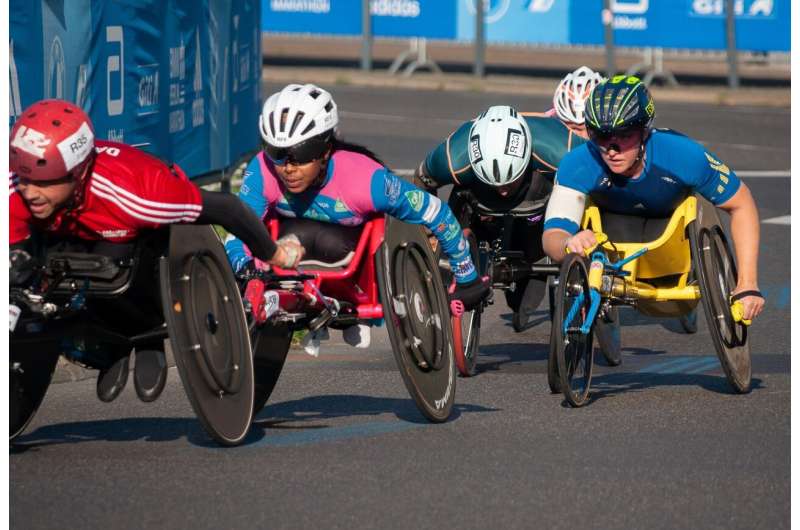This article has been reviewed according to Science X's editorial process and policies. Editors have highlighted the following attributes while ensuring the content's credibility:
fact-checked
trusted source
written by researcher(s)
proofread
Paralympic classification isn't just a way to organize sports—it also affects athletes' experience, researcher says

Athletes from around the world are in Paris for the 2024 Paralympic Games. The Games will feature more than 4,000 athletes with various disabilities competing in 549 medal events.
To ensure all athletes have a fair and equitable chance at achieving success at the Paralympics, organizers use a classification system that seeks to minimize the impact a person's disability has on their performance.
Ideally, classification means that, rather than having to change the rules of the event for each competitor, the Games themselves account for the unique ways people with disabilities run, jump, throw and otherwise compete.
In athletics, for example, athletes compete across standard distances (100 meters, 200 meters, etc.), but only against those whose impairments affect them in similar ways. In team sports, like wheelchair rugby or basketball, athletes with different types and levels of impairment compete alongside and against one another.
To ensure team competitions remain fair, athletes' individual impairment levels are considered when deciding who will be on the field of play at any given time. Teams can therefore be comprised of athletes with more and less severe impairments, so long as each team as a whole is similarly able.
However, while the concept of classification is relatively straightforward, the process of getting classified can be anything but. And for some athletes, it can itself be damaging.
The classification process
To become classified, athletes must compile medical documentation of their impairment before registering with their international federation and submitting themselves for observation immediately prior to an international competition. These observations typically include three elements: a medical and technical assessment and in-competition observations.
Securing medical documentation can be costly and time consuming, and some athletes will be classified multiple times over their careers; this can be an arduous process.
In addition to the time required to become classified, athletes often report feeling that, while Paralympic sport is meant to inspire change and improvements in the lives of people with disabilities, the process of classification can itself be ableist.
Classification requires athletes share the most intimate details of their disability with a panel of strangers. This can often leave athletes feeling awkward and embarrassed by the process.
Athletes' experiences
While classifiers have extensive training and professional experience related to human movement and disability, this expertise adds to athletes' feelings of vulnerability. Because classifiers are in the position to grant or deny an athlete's request, they hold significant power over the athletes they classify. When left unchecked, this can have devastating consequences for athletes.
As a graduate student, I interviewed Paralympic athletes about their experiences with classification. One athlete shared that classifiers ignored their complaints of pain during an assessment and pushed them past their physical limit. That led to an injury and the athlete leaving their sport permanently shortly thereafter. This is not the first report of an athlete leaving sport due to issues with the classification process.
Athletes and classifiers alike attribute such negative experiences to poor communication. Yet, because classification happens immediately prior to competition, there are few opportunities for athletes to speak informally with classifiers or ask questions about the process in a less pressurized environment. Even coaches report seldom having the chance to learn about classification.
Improving the process
Through my doctoral research, I sought to address this gap by recommending ways Canadian national sport organizations can better educate parasport participants about classification. The recommendations include developing improved staff training materials and dedicating additional financial and human resources to classification.
Further work is needed, however, to ensure no more athletes leave sport as a result of classification. The International Paralympic Committee and international sport federations must consider more than just the efficacy of classification procedures when reviewing the Classification Code.
Athletes' experiences should be central to the design and implementation of classification procedures. To achieve this, sport federations must actively recruit former athletes to become classifiers. In addition, providing athletes with additional opportunities to meet with classifiers outside of competition will similarly improve communication between athletes and classifiers.
So, when watching the Paralympics over the coming weeks, consider not just the amazing performances you see on TV, but the effort athletes have put into securing their spot in sport.
This article is republished from The Conversation under a Creative Commons license. Read the original article.![]()





















